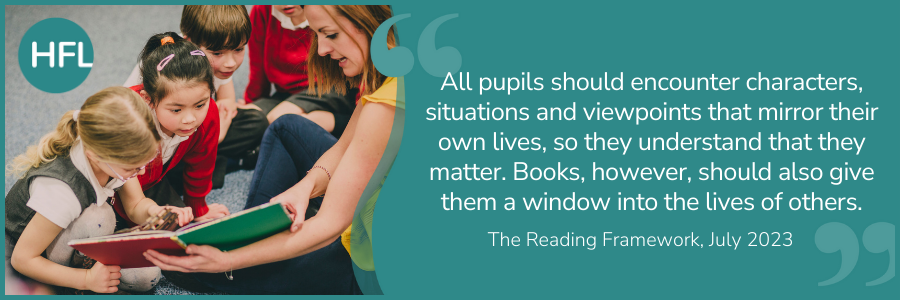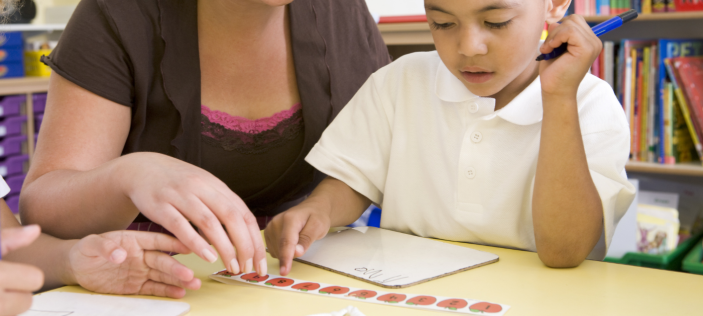
With World Book Day just around the corner on Thursday 7th March, we encourage you to think about how you can use this event to promote inclusion within your school whilst also engaging, enthusing and exciting children about reading.
Literature is probably the most powerful medium through which children have a chance to inhabit the lives of those who are like them….
The Reading Framework July 2023
In “The Full Story”- a recent report for the NEU that explores how books can be used to promote disability inclusion - Mark Jennett explains that:
Arguably, the group least well served by children’s literature are disabled people. Depictions of disability are still relatively rare. Where they do occur, they are often part of bullying narratives or feature people ‘overcoming’ their impairments to achieve great things, neither of which necessarily aid inclusion.”
The Full Story, NEU
For a long time, characters in children’s books with disabilities were either non-existent, or followed the medical model where disability was portrayed as a barrier that needed to be ‘suffered’ or ‘overcome.’ Sometimes, disability was used as a plot device to elicit a particular response from the reader: I remember feeling confused even as a child reading The Secret Garden, when the combination of his new friend, Mary Lennox, and some fresh air enabled Colin to rise from his wheelchair and recover from his long-term disability.
Stories began to include characters with disabilities, but often their disability was a ‘necessary’ part of the plot – think “The Curious Incident of the Dog in the Night-Time.” But it can be confusing for children to read about disability as a ‘superpower’: that doesn’t always feel particularly real either.
In many great stories you recognise the characters because they remind you of yourself, your siblings or someone in your class. Inspiring books can help us to explore the big questions of how we belong, what our value is and how we can contribute to our world.
In the best titles, disabled characters are shown to enjoy many of the same things and to have much in common with the rest of us. They are neither victims nor heroes – just ordinary people getting on with the business of living.
The Full Story, NEU
More recently, there are some good examples where this story telling balance takes place– where disability is visible but incidental. My 11-year-old son believes that the Percy Jackson series by Rick Riordan achieves this.
A group of neurodivergent young people - interviewed as part of Edinburgh University’s “Neurodiversity & Narrative Fiction Project” - described how “representation should be complex, realistic, and positive.” They believed that if they had been able to read books featuring neurodivergent characters when they were younger, this could have helped them gain a better understanding of themselves and feel less isolated:
"I would have known that this was a normal thing to have. And that there were lots of other people like me, it would have helped a lot." Neurodiversity & Narrative Fiction Project
But this is only half of the picture. The Reading Framework continues:
Children also need to learn about the lives of those whose experiences and perspectives differ from their own. Choosing stories and non-fiction that explore such differences begins to break down a sense of otherness that often leads to division and prejudice.
The Reading Framework, July 2023
Books aren’t just about stories, and non-fiction books can provide an essential bridge to extend our knowledge. Some children tell us they feel isolated by their disability, especially if it that disability is less visible in their community or society as a whole.
I discovered that one of the best ways to help children to empathise with each other is through children’s books….it opens up a dialogue about disability without putting a particular child on the spot and making the conversation specifically about them.
Victoria Williamson, author
The Abilities in Me series of books, written by Hertfordshire author Gemma Keir, are well pitched as an introduction to a range of additional needs and disabilities. Books can give teachers a gentle way to explore and discuss difference on a daily basis.
How illustrators choose to include children with disabilities can also help subtly introduce children to a wider range of visible disabilities than they might have encountered so far in their own experiences.
The DfE’s Reading Framework describes this dual function of books as being both ‘mirrors’ and ‘windows,’ a term first introduced by Dr Rudine Sims Bishop in 1990.
All pupils should encounter characters, situations and viewpoints that mirror their own lives, so they understand that they matter. Books, however, should also give them a window into the lives of others.
The Reading Framework, July 2023.
In 2021, HFL Education’s annual SEND conference coincided with World Book Day, and to celebrate we included some of our favourite inclusive reads. We quickly realised how much schools value inclusive book recommendations; now we always include new titles in our SEND briefings. Recent choices for Key Stage 1 that we have highlighted include:
- You’re so Amazing! by James and Lucy Catchpole
- Dexter! The Amazing School Dog! by Lucy Plunkett and Sian Bowman
- This is Me! By George Webster
We display this quote every time we introduce the book section:
Inclusion is particularly important. No child should ever feel excluded by books. No child should feel that they don’t belong in books, because they never see themselves reflected in their pages, and so reach the conclusion that books are for other people, not for them.
S F Said, writing for the Book Trust 2023
This World Book Day, we encourage you to reflect with your team about how your book choices can demonstrate to all children, including those with additional needs or disabilities, that you see them, that you value them and that you want them to know that they belong.
Please email: hflsend@hertfordshire.gov.uk if you have discovered a book that we can share with our wider SENCO community at future SEND briefings.
If you’d like more inspiration for your library, the BookTrust has recommendations, including books about Autism, ADHD and Dyslexia.
The Full Story, published by the NEU, includes a list of inclusive book recommendations.
Further reading and references:
Creating inclusive bookshelves: Why diversity matters, July 2022
Inclusion - the Importance of seeing yourself in a book, July 2023
Seeing yourself in what you read: Diversity and Children and Young People’s Reading in 2022
Disability tropes in Children’s Books – some thoughts for teachers
Neurodiversity and Narrative Fiction, University of Edinburgh



